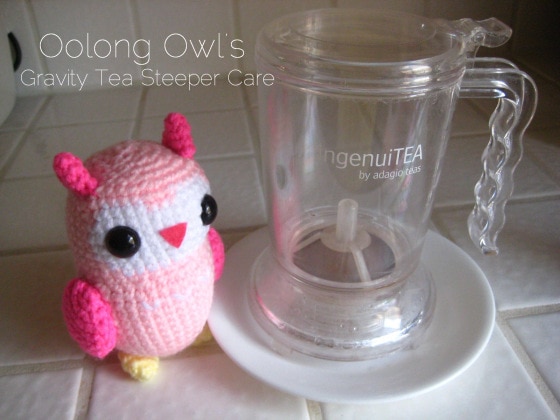
In early into my tea journey, Gravity Tea Steepers got me started into making amazing loose leaf tea.
Before gravity steepers, I was use those tea ball chain things which were messy and didn’t give tea room to expand. I also used paper filters that you can fill with your own loose leaf, but I found that was a bit of waste. Once I got my first gravity steeper, in my case DAVIDsTEA the Steeper, I immediately noticed a flavor difference. Tea had a fuller and stronger flavor!
Years later, I acquired other tea ware for steeping, such as teapots and gaiwans, but I always go to my gravity steeper for blends or western style tea steeping.
Let’s go into detail about this magical tea steeping tool and how to take care of it.

What is a gravity tea steeper? They are a tea steeping device that you infuse your loose leaf tea in. Pressing on the bottom of the device (with your fingers, or placing the device on a cup) will dispense the steeped tea from the bottom, filtering the leaves out of your cup.
There are plenty of Gravity Steepers on the market. I’ll list a few:
- DAVIDsTEA the Steeper – available in 18oz and 36oz
- adagio teas ingenuiTEA – available in 16oz and 32oz
- Teavana Perfect Teamaker – also avaiable in 16oz and 32oz
- Hourglass style gravity infuser – various tea stores sell this style. Usually around a 20oz size.
It seems the typical price at this time is around $19 for a 16 to 20oz model and $24 to $30 for larger infusers.
I personally own DAVIDsTEA the Steeper and a adagio teas ingenuiTEA.
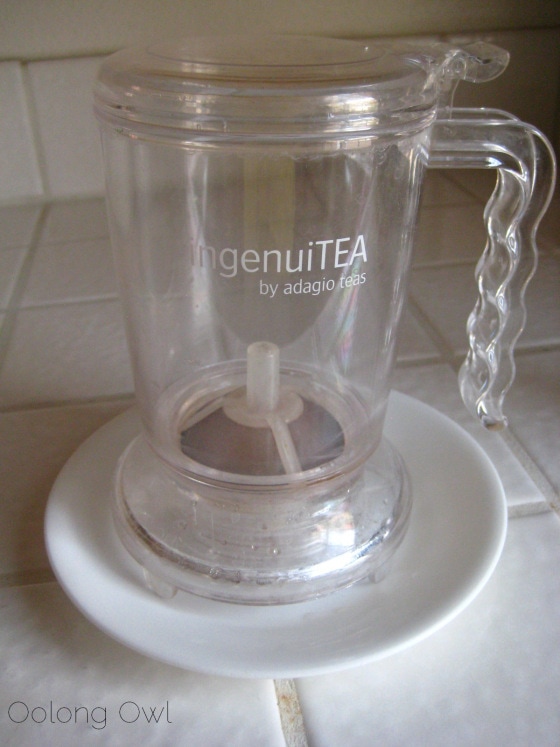
I prefer the DAVIDsTEA the Steeper or any of the wider base models. The ingenuiTEA is too narrow and doesn’t fit most of the cups I use, so I have to use my fingers to touch the bottom to dispense the tea. The narrow gravity steepers are also harder to clean as it is harder to get your hand inside to deal with the filter. Models with “bends” could also provide difficulty.
With that said, I highly suggest going with an open, wider squat model from or similar to the DavidsTea or Teavana models.
What makes a gravity steeper awesome:
+ The design of the steeper has lots of room for the tea to expand, giving the tea the chance to release all its flavor.
+ Resteeping is very easy – the leaves are kept inside, so all you have to do is add more hot water.
+ Very easy to use with low mess as the tea is poured out the bottom of the device.
+ Perfect for 1 or 2 cups of tea (though, there are bigger models available)
+ Filter works very well, filtering out small teas like rooibos.
+ Great for iced teas, simply dispense the strong tea into a tumbler of ice.
Though the design has some cons to deal with:
– Not the greatest heat retention. I haven’t tested my gravity steepers, but I can easily tell a big difference in temperature making a cup of tea in a gravity steeper vs small tea pot.
– Additional cleaning needed to prevent staining and ensuring the filter preforms well. However, I think it is inevitable that there will be staining or clouding.
– Very fine dusty teas (such as orzo) can clog the filter.
– Majority of models are BPA free plastic, but unfortunately no glass or ceramic models at this time.
– Can drip out the bottom. I’ve noticed all mine don’t leak when steeping, but will drip a few drops after I dispense the tea. With that said, I keep a saucer underneath the steeper to catch all the artistic tea designs.
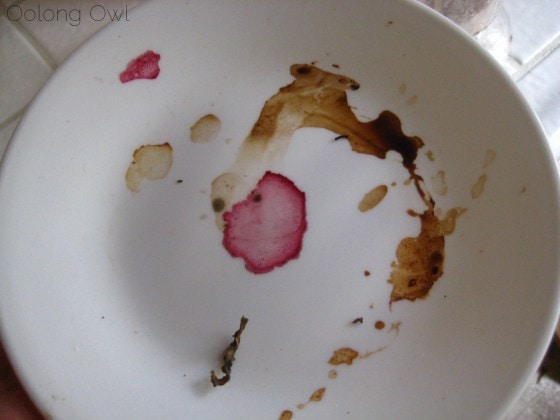
I wonder if I could sell that as tea art?
CLEANING:
Quick cleaning – I only do this cleaning when I’m making more of the same type of tea the same day. Simply dispose the leaves (I like putting mine in my compost pile) and rinse out the gravity steeper.
Better cleaning – Every time I switch tea types, or if I left the tea leaves in the gravity steeper overnight, I do this cleaning. Simply rinsing out the steeper can leave traces of the flavor from the previous tea – this method quickly removes the lingering tea flavors and scent.
Pour a couple teaspoons of baking soda into the gravity steeper. Add a spoon of water and rub the baking soda like paste into the sides to remove any colouring. Swirl in tap water or hot kettle water to rinse. I sometimes pop out the filter and give it a baking soda rub and a good rinse. Occasionally, I leave the steeper to soak in the baking soda and water a few minutes while I decide on a tea to make.

With my first steeper I did mostly quick cleanings and it stained, with some buildup I don’t think I’ll get out. EWWWWWWW!

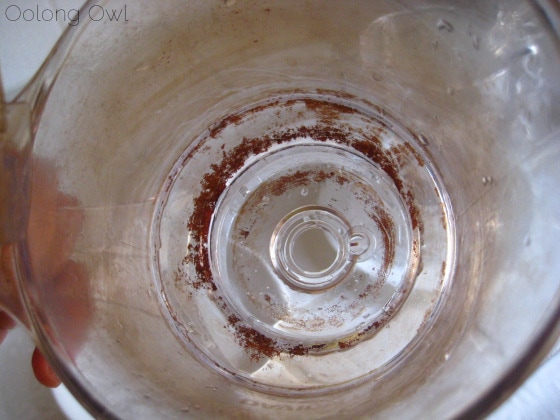
With my newer gravity steeper, I often do baking soda rinses and rubs and I have no staining so far, though bit of cloudlyness starting to show.
*** I found cream of tartar works pretty much the same as baking soda, however cream of tartar is much more expensive! I use quite a bit of baking soda for cleaning (especially my tea ware), so I now buy the 5lb bucket.
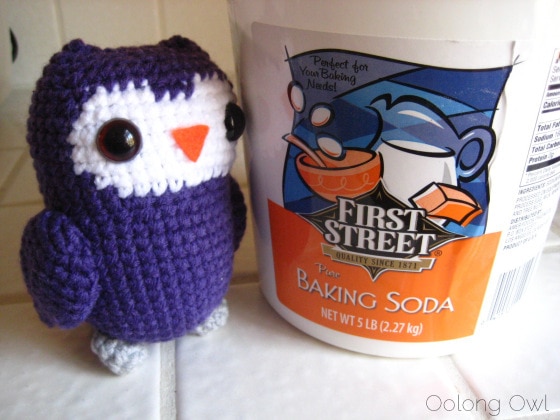
Thorough Cleaning – I do this cleaning when I notice build up of tea in the steeper… or when I discover I left my tea leaves after coming back from vacation. Eww!!!!
Dismantle the entire device – pop out the filter and push the middle plunger thing down so it squeezes out the bottom. Remove the washer.
Soak everything in a bowl of hot water and baking soda – leave to soak for a few hours.
Once thoroughly soaked, there still can be some tea residue on the washer or on parts of the filter. Go in and scrub those with soapy water or more baking soda – I do extra care to clean the underside as that is where the tea pours from.
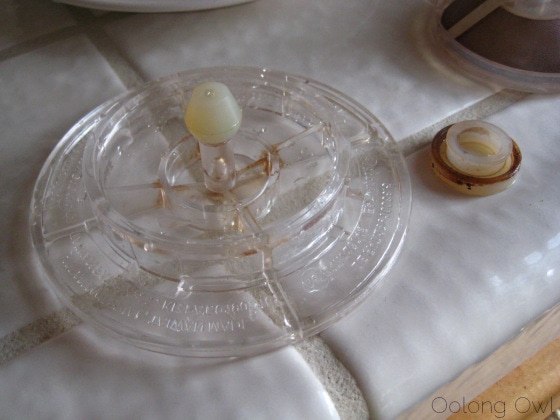
I use a toothpick to scrape all the tea gunk off out of small spots like inside the filter.
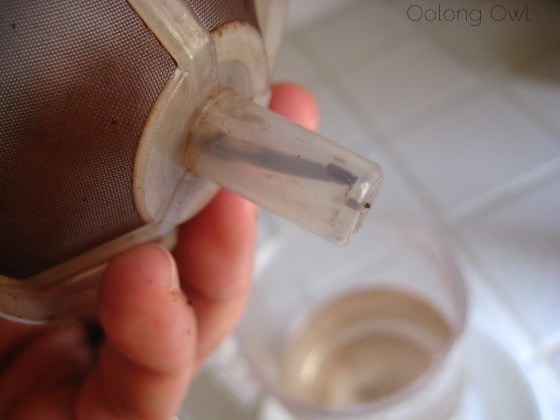
Give the main body a nice soapy brushing.
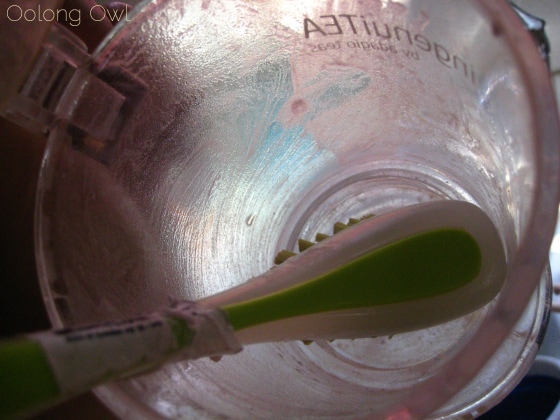
Unclogging the Filter – sometimes the filter will clog, especially after dusty orzo teas, or tea build up over time.

What I found worked to unclog the filter was to rub some baking soda on the filter. Place the filter in a cereal bowl and pour some vinegar on it. It will foam up a bunch! Set aside for a few hours and it will clean the filter.
Best Ultra Deep Fast Cleaning (edit): Dismantle the entire gravity steeper and Soak with the Mandala Tea Soak (full blog post review). This does everything like the thorough cleaning but with no scrubbing.
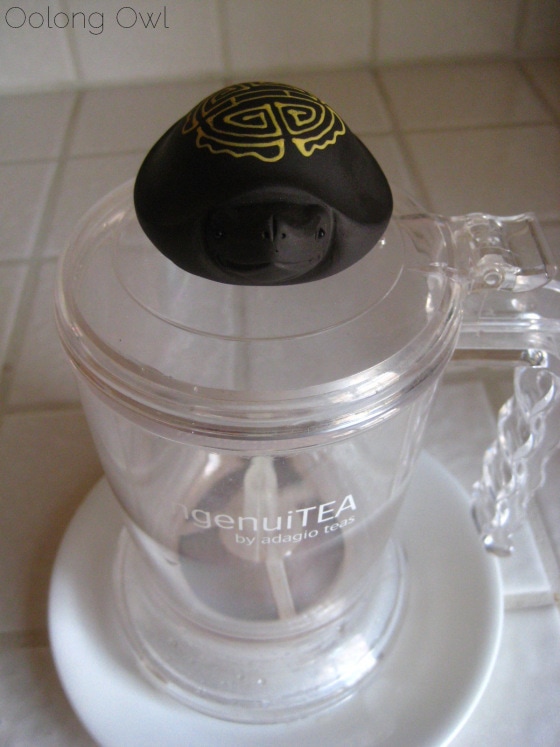
I’ve heard of people owning a couple gravity steepers restricting their use to a specific tea type. I’d personally rather use a yixing clay pot which will give back in flavor over time, something a gravity steeper will not do. If you clean and treat your gravity steeper well, you should have very little contamination of flavor, cup to cup.
BONUS:
I made a crochet tea cozy for my DAVIDsTEA the Steeper – check the pattern out over on my crafting blog!







